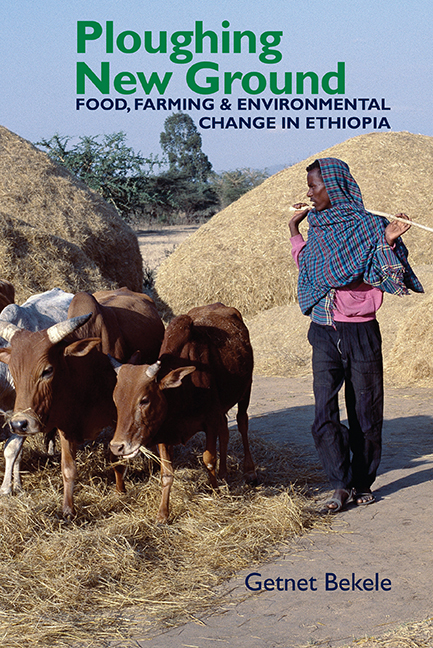Book contents
- Frontmatter
- Dedication
- Contents
- List of Maps and Tables
- Acknowledgements
- Note on Orthography
- Acronyms & Abbreviations
- Glossary
- Map
- Introduction
- 1 Landscape Pastoral: The making and remaking of a grassland environment, 1886–1916
- 2 Negotiating a Landscape: Continuity and change in a grassland environment, 1917–1941
- 3 Blurring the Boundaries: The ascendancy of crop production in a flexible environment, 1942–1955
- 4 Fresh Encounters and Morphing Strategies: The changing organization of production in an era of agricultural intervention, 1956–1965
- 5 Inputs, Outputs and the Farm: Transformations in the science, politics and praxis of agricultural development, 1966–1974
- 6 Competition and Co–existence: Creating space for small- to large-scale farming, 1966-1974
- 7 Of Production and Production Relations: Farming in an era of revolutionary change and socialist development, 1975–1991
- 8 Vicious Circle: Agricultural development at the time of ‘revolutionary democracy’, 1991–2016
- Conclusion
- Bibliography
- Index
- Eastern African Studies
4 - Fresh Encounters and Morphing Strategies: The changing organization of production in an era of agricultural intervention, 1956–1965
Published online by Cambridge University Press: 31 August 2018
- Frontmatter
- Dedication
- Contents
- List of Maps and Tables
- Acknowledgements
- Note on Orthography
- Acronyms & Abbreviations
- Glossary
- Map
- Introduction
- 1 Landscape Pastoral: The making and remaking of a grassland environment, 1886–1916
- 2 Negotiating a Landscape: Continuity and change in a grassland environment, 1917–1941
- 3 Blurring the Boundaries: The ascendancy of crop production in a flexible environment, 1942–1955
- 4 Fresh Encounters and Morphing Strategies: The changing organization of production in an era of agricultural intervention, 1956–1965
- 5 Inputs, Outputs and the Farm: Transformations in the science, politics and praxis of agricultural development, 1966–1974
- 6 Competition and Co–existence: Creating space for small- to large-scale farming, 1966-1974
- 7 Of Production and Production Relations: Farming in an era of revolutionary change and socialist development, 1975–1991
- 8 Vicious Circle: Agricultural development at the time of ‘revolutionary democracy’, 1991–2016
- Conclusion
- Bibliography
- Index
- Eastern African Studies
Summary
In the lake region the decade from 1956 was marked by the expansion and growing maturity of crop production along the lines that had started in the previous dozen years. Feeding that expansion were once again the competitions and negotiations for places, spaces and valued agricultural resources that entered into yet another level of intensity and significance in that decade. Also important had been the technological factors that underwent some meaningful change and transformation beginning in the early 1950s. This was particularly true for the seed technologies, namely the brand new cultivars and improved seed varieties of the major food crops, including tef, wheat and corn/maize that originated from the modern centres of crop research and development that the Ethiopian state and its international allies had organized in the lake region and few other parts of the country after 1948. As this chapter seeks to demonstrate, the interaction of these two factors, namely the social and the technological, was what underpinned agricultural and environmental change and transformation in the region in the period examined.
SEEDS OF CHANGE
Already by the middle of the twentieth century, the majority of the lake region's farmers seem to have become self-sufficient in terms of seed capital. Yet neither that factor nor their success in crop production was able to deter them from embracing a new set of cultivars and seed varieties along the way. Of these, certainly the most attractive to them had been the varieties originating in the newly organized modern centres of crop research and development and community farms that started to grow in that region and some other parts of the country in the decade after 1948.
First among these was the school farm that the Seventh-day Adventist Mission organized in its Kuyera campus (located just to the north of Shashamane town) shortly after its establishment in 1948. Also important had been the community and demonstration farms that a group of retired soldiers and the Awasa Community Training Center (ACTC) organized in the northern outskirts of Awasa town in 1958 and 1962, respectively.
- Type
- Chapter
- Information
- Ploughing New GroundFood, Farming & Environmental Change in Ethiopia, pp. 81 - 103Publisher: Boydell & BrewerPrint publication year: 2017

